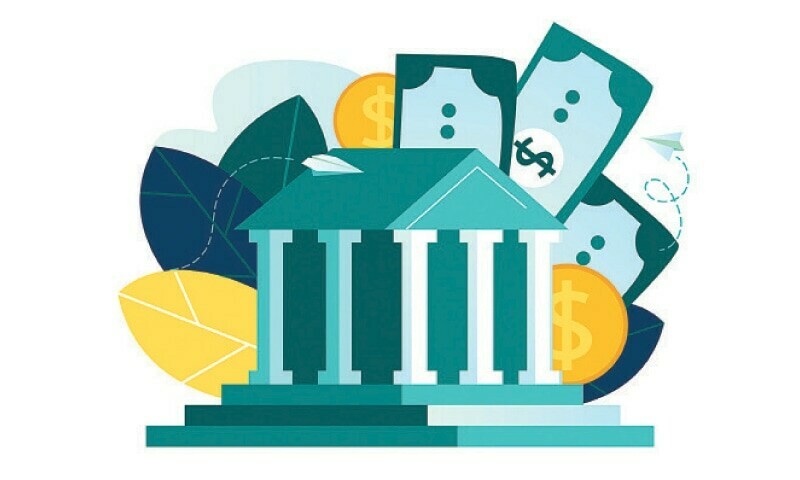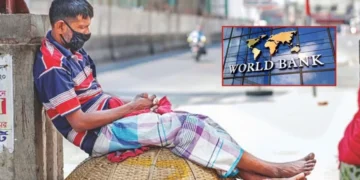In an economy battling inflation and low private sector activity, government borrowing in Bangladesh has seen a sharp 74 percent rise in the current fiscal year. The increase is driven by reduced borrowing from the central bank and sluggish private credit demand, prompting the government to turn more heavily to commercial banks for funding.
According to data from Bangladesh Bank, the government borrowed Tk78,832 crore from commercial banks between July and 20 February in FY25. This was done by selling Treasury bills and bonds. Compared to Tk45,231 crore borrowed during the same period last year, the difference highlights a significant strategic shift.
What is Driving the Increase in Borrowing
The reasons are rooted in policy decisions rather than immediate fiscal stress. With private sector credit growth slowing and banks holding excess liquidity, the government has opted to borrow more from commercial banks. This is part of a broader plan to reduce reliance on the central bank in line with a contractionary monetary policy. At present, the government’s total outstanding borrowing from commercial banks stands at Tk3.97 lakh crore.
Reducing Pressure on the Central Bank
One of the key developments this fiscal year is the government’s move to repay its outstanding debt to the central bank. Over the first eight months of FY25, Tk62,000 crore was repaid using funds borrowed from commercial banks. This brought down the government’s total outstanding borrowing from the central bank by nearly 40 percent. It declined from Tk1.56 lakh crore in June 2024 to Tk94,042 crore.
Zahid Hussain, former lead economist at the World Bank’s Dhaka office, explained that this repayment strategy compresses the central bank’s balance sheet and helps correct earlier monetary expansion. This has helped slow the growth of reserve money. Although inflation has been declining for the last two months, the effect of the reduced central bank borrowing on inflation is still unfolding.
What Could Have Happened Without the Borrowing Shift
According to Zahid Hussain, had the government not shifted its borrowing to commercial banks, the money supply would have increased significantly. Banks would likely have issued more loans to the private sector. If these funds were misused, it could have driven up inflation.
Read More: Reform Commission to Recommend Building World-Class Hospitals to Reduce Patient Exodus
Currently, broad money growth has decreased, mainly because of the lack of private sector borrowing. In December 2024, private sector credit growth fell to 7.28 percent. This was a drop from 7.55 percent in November and the lowest rate since May 2021. The figure remains well below the central bank’s 9.8 percent target for the first half of FY25.
Why Are Banks Lending More to them
From the banks’ perspective, lending to the government has become more appealing. Weak demand for private loans combined with surplus liquidity has prompted banks to invest more in government instruments. Treasury bills and bonds are backed by the government and present minimal risk. These instruments offer a stable return in uncertain times.
A central bank official noted that deposits from weaker banks have flowed into stronger ones, increasing available liquidity. With fewer options for profitable private lending, banks are turning to government securities.
In many cases, they raises more funds than what banks initially bid. Although interest rates on these bonds are now above 12 percent, the high demand is gradually pushing rates down.
Targets and Progress
According to the revised FY25 budget the government plans to borrow Tk1,17,000 crore from domestic sources. This includes Tk99,000 crore from the banking sector and Tk18,000 crore from the non-banking sector. As of late February, the government has borrowed 17 percent of its banking sector target.
The net borrowing from the banking sector reached Tk4.91 lakh crore as of 20 February, up from Tk4.74 lakh crore at the end of June 2024. This marks a 34 percent year-on-year rise in net borrowing.
Bangladesh Bank is aiming to manage inflation through tighter monetary controls. Measures include reducing government debt and increasing policy and lending rates.
What Lies Ahead
Zahid Hussain pointed out that while current strategies have helped curb inflation and money supply growth, the government should consider scaling back its borrowing targets. He suggested that borrowing Tk15,000 to 20,000 crore less could provide room for increased private sector credit. That shift could support productive investments and economic stability in the long term.
The recent surge in government borrowing in Bangladesh tells a deeper story about policy decisions and economic adaptation. By reducing its reliance on the central bank and using commercial banks to manage debt, the government is trying to strike a balance between controlling inflation and meeting fiscal demands.
How this strategy plays out will depend on careful spending decisions and how quickly private sector activity can pick up. For now, the government’s approach offers both stability and new questions about the future direction of the economy.
Source: Business Inspection BD
Share via:



















